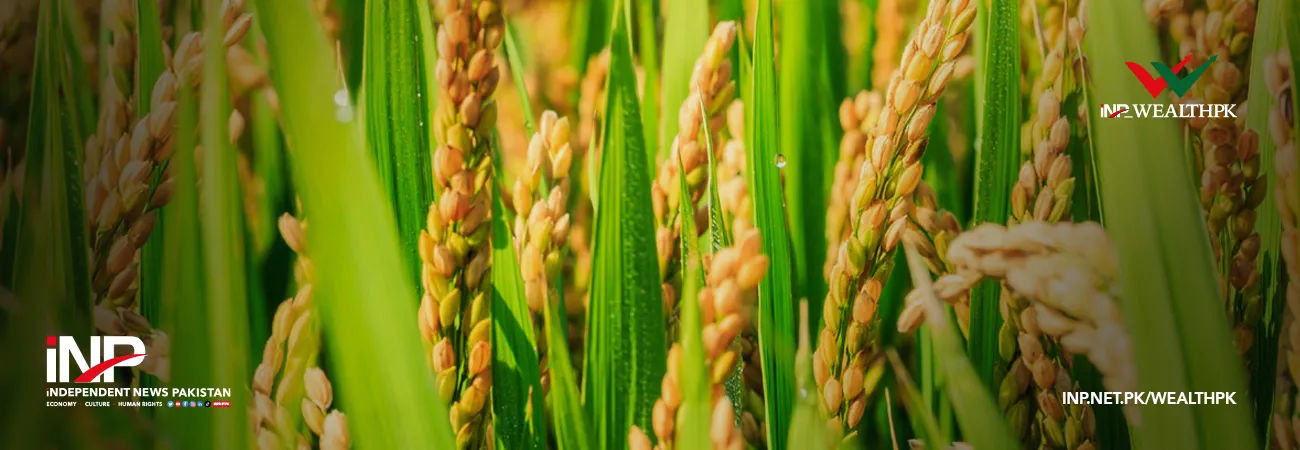INP-WealthPk
Arooj Zulfiqar
Mechanized farming has emerged as a transformative force in Pakistan's rice sector, reshaping traditional cultivation practices and driving efficiency across the agricultural outlook, reports WealthPK. "Traditionally, rice farming in Pakistan has relied heavily on the manual labour, with farmers manually planting and harvesting crops. However, the advent of mechanized farming has introduced advanced machinery and technology-driven practices, revolutionizing the way rice is cultivated, said M Abid, Senior Scientific Officer (SSO) at the National Agricultural Research Council (NARC), while talking to WealthPK. The regions that rely on wage labor for agriculture, such as northern Punjab and lower Sindh, are increasingly embracing mechanization of harvesting and sowing. During the harvest period, scarcity of labour is facilitating the implementation of mechanization. For example, in the Basmati rice region of northeastern Punjab's Kalar Tract, rice harvesting has been completely shifted to mechanical harvesters, significantly reducing the harvest period from 5-6 weeks to 20 days.
"Mechanized farming techniques significantly improve the operational efficiency. Machinery such as rice transplanters and combine harvesters streamline planting and harvesting processes, reducing labour requirements and time spent on the manual tasks." Additionally, he said by optimizing planting densities and ensuring uniform crop establishment, mechanized farming contributes to higher rice yields. Precise control of overseeding and fertilization also improves crop quality and yield consistency. The NARC scientist said, "While initial investments in machinery are substantial, mechanized farming offers long-term cost savings. Reduced labour expenses, lower fuel consumption per hectare, and improved resource utilization contribute to enhanced profitability for the farmers. "Despite clear advantages, the adoption of mechanized rice farming faces certain challenges. One of the primary hurdles is significant initial investment required to transition to mechanized farming.
This includes purchasing modern machinery such as harvesters, transplanters, and seed drills, which can be costly for small-scale farmers. "Furthermore, adopting mechanized farming techniques demands certain technical expertise. The farmers need training to operate and maintain a complex machinery effectively. Access to skilled machine operators is also crucial for maximizing the efficiency of mechanized processes. "Rural infrastructure, including roads and storage facilities, plays a vital role in the success of mechanized farming. However, their limited access to well-maintained infrastructure in remote areas can hinder the adoption of mechanized techniques and increase operational challenges," he said. Despite the challenges, the momentum towards mechanized rice farming in Pakistan is promising. As the farmers overcome barriers with support from government initiatives, improved infrastructure, and access to technology, the agriculture sector is poised for a modernization wave that can drive sustainable growth and food security in the country.
The rice sector in Pakistan has been struggling to increase exports, which have remained stagnant at around US$2-2.5 billion over the past decade. To address this issue, it is crucial to modernize the sowing and harvesting practices in order to boost yields from the same cultivated area. While the Basmati rice crop is now harvested mechanically in Pakistan, the current harvesters are outdated and mostly designed for wheat. Studies conducted by the National Agricultural Research Centre (NARC) indicate that the yellow-coloured New Holland combines harvesters, which are commonly used across Pakistan during the harvest season, result in rice grain losses of 5-19%. On the other hand, scrap rice harvesters have grain losses of 2.2-5%. In contrast, a recent study by the Asian Development Bank (ADB) found that new harvesters such as Thinker and Kubota have much lower grain losses (1-2.5% and 0.8-3%, respectively) and significantly less grain breakage compared to the older rice-only machines.
Credit: INP-WealthPk













